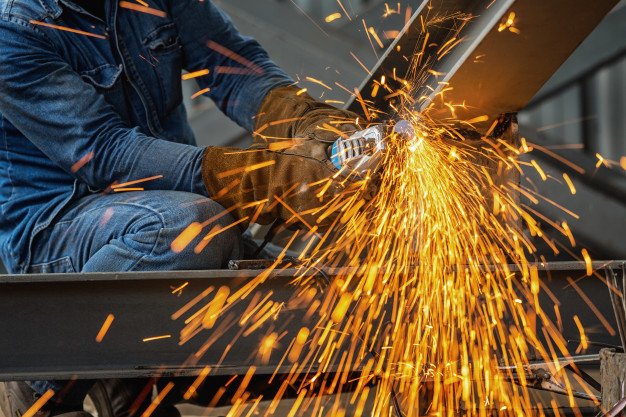Cutting tools are just the same old thing new. From the principal stone tomahawks to the most cutting edge end plants, people have been making and refining tools since the get-go. In this article we’ll be covering the best 8 milling tools that frame the foundation of each expert machining work. Before you even begin pondering feeds and speeds you have to understand these fundamentals. Of course we can’t cover everything in one short blog, so accept this as some primary learning to expand upon when you experience extraordinary or claim to fame tools.
Milling Tool Materials
Prior to hopping into each instrument, how about we center on what they share for all intents and purpose – apparatus material and crucial activity. The most widely recognized materials you’ll experience in CNC milling tools include:
Carbon Steel
This is the cheapest material of the cluster and incorporates 0.6-1.5% carbon with little measures of manganese and silicon. You’ll regularly locate this material utilized for low-speed tasks in curve drills, shaping tools, milling cutter, and turning.
Rapid Steel (HSS)
This material consolidates chromium, tungsten, and molybdenum to give HSS enhanced hardness, sturdiness, and wear opposition over carbon steel. HSS tools are commonly more costly than others, however they’re worked to last and give a high material evacuation rate for both ferrous and nonferrous materials.

Milling Tool Fundamentals
The HSS or carbon steel end process, the majority of your tools will work the equivalent. The standards of revolution course, chip arrangement, chip load, and milling introduction will go with you all through your engineer profession.
Climb and Conventional Milling
Ordinary milling is generally utilized on manual machines, where downplaying backfire is vital. In this cutting course, the instrument cuts from a little measure of material up to a bigger thickness, rubbing against the material through the cut.
cnc cutting tools, which have a higher unbending nature and are essentially less inclined to backfire, will utilize a Climb Milling process where the apparatus progresses through a material from most extreme to least thickness. This cutting procedure enables the warmth to leave the cut with the chip, decreasing warmth age and apparatus wear while creating a superior surface complete than ordinary milling.
1 – End Mills
Need to begin shearing without end heaps of material? End plants or aluminum endmill are your answer. While end plants can take numerous structures, they regularly have sharp cutting woodwinds on the finishes and sides, and can be utilized in different cutting applications
2 – Face Mills
You’ll utilize this apparatus to make a level region on a square of material. This is commonly done on the highest point of the stock to level it before other milling tools are utilized. A face process contains one strong body with numerous cutter embeds that can be swapped as required. The more cutters, the quicker metal can be expelled.
3 – Fly Cutters
Need to deliver an astonishing surface wrap up? Fly cutters can get it going. This cutting tools moves along the surface of a material in a clockwise revolution, creating a ultra clean sparkle.
4 – Twist Drills
Drill bits have a funnel shaped cutting point with a pole that has at least one woodwinds, like an end process. The most widely recognized wind drills or cnc collectsare made out of High Speed Steel (HSS) or strong carbide. Gold-shaded coatings, for example, TiN are ordinarily used to expand the hardness of the drill, lessen wear, and increment instrument life.
5 – Center Spotting Drills
These thickset tools are utilized to make an exact conic gap before drilling which keeps drill bits from “strolling” amid activity, or drilling the gap at an incorrect area. There are additionally consolidated spotting-countersink drills which can make a tighten freedom opening and countersink one task.
6 – Taps and Thread Mills
Taps are utilized to cut inside strings in a material. In any case, not all strings are made with a cutting procedure. Fold Form taps are constrained into an opening and the material is then conformed to the tap. This works incredible for gentler materials like aluminum, copper, metal, and plastics. String plants are comparable, however can cut either inner or outside strings.
7 – Reamers
Reamers can extend existing gaps to an explicit resilience while likewise including a pleasant surface wrap up. You’ll utilize these to guarantee a gap has an exact roundness and distance across. Reamers require a pre-drilled opening that is close enough in size so it just needs to evacuate a little measure of material.
8 – Tool Holders
Strong End Mill Holders End plants with a Weldon level are anchored by a set screw, which gives a solid grasp and negligible misfortune in concentricity.

